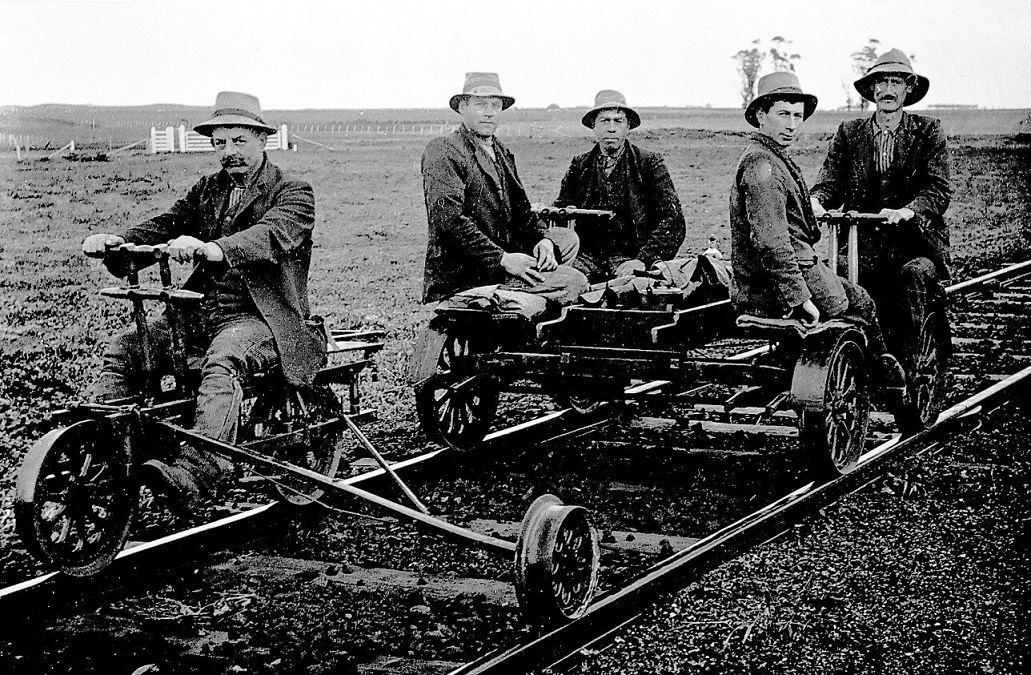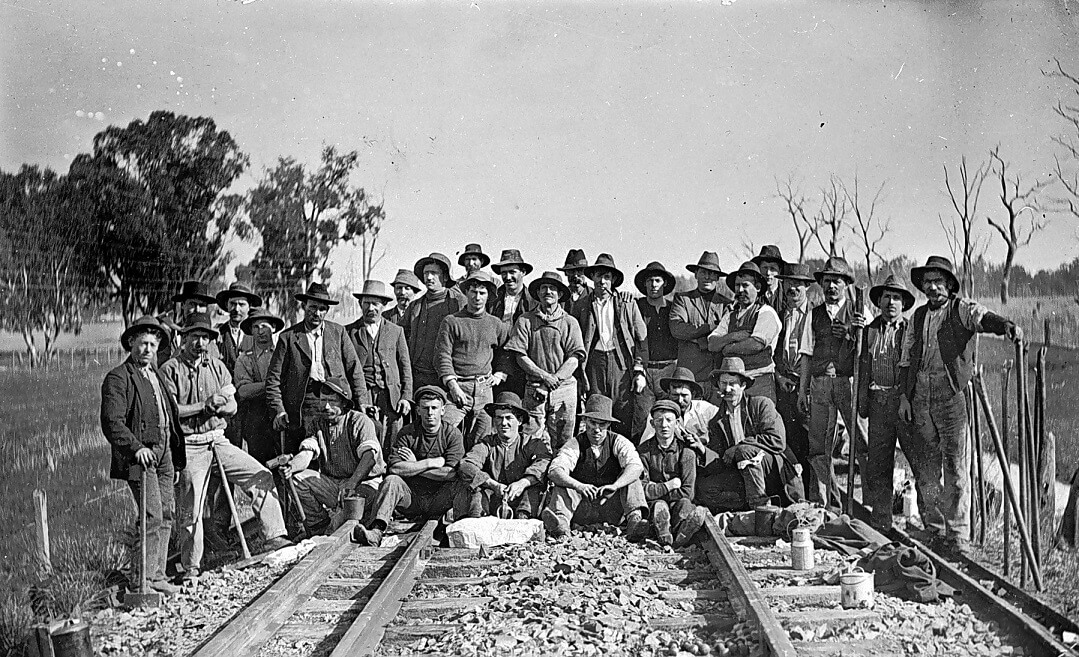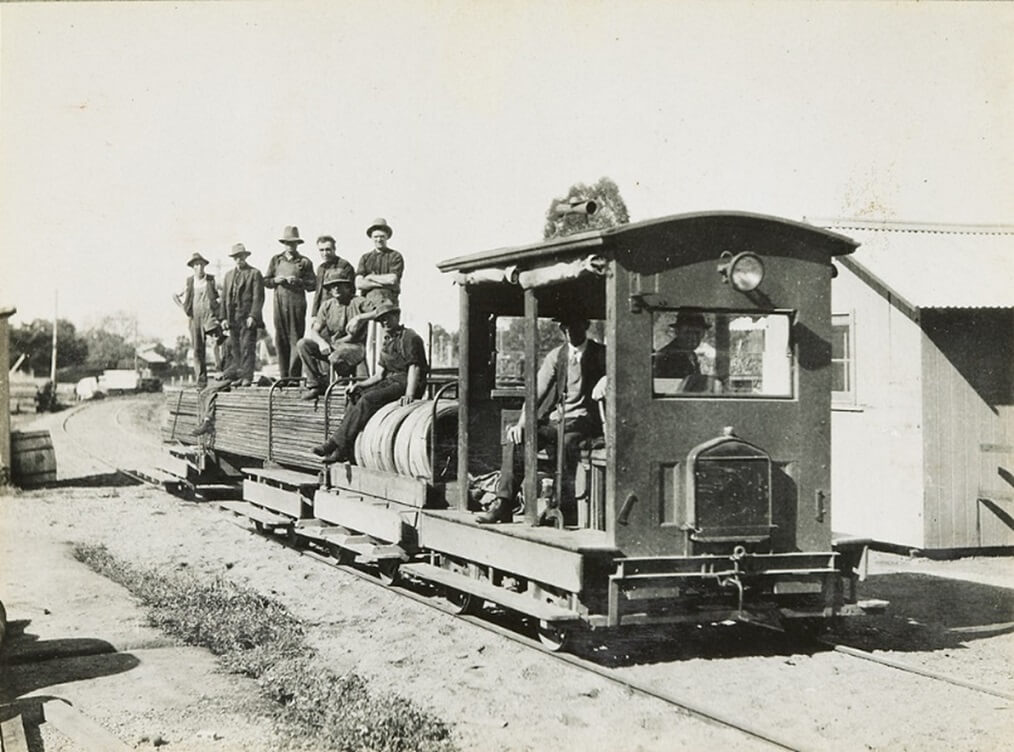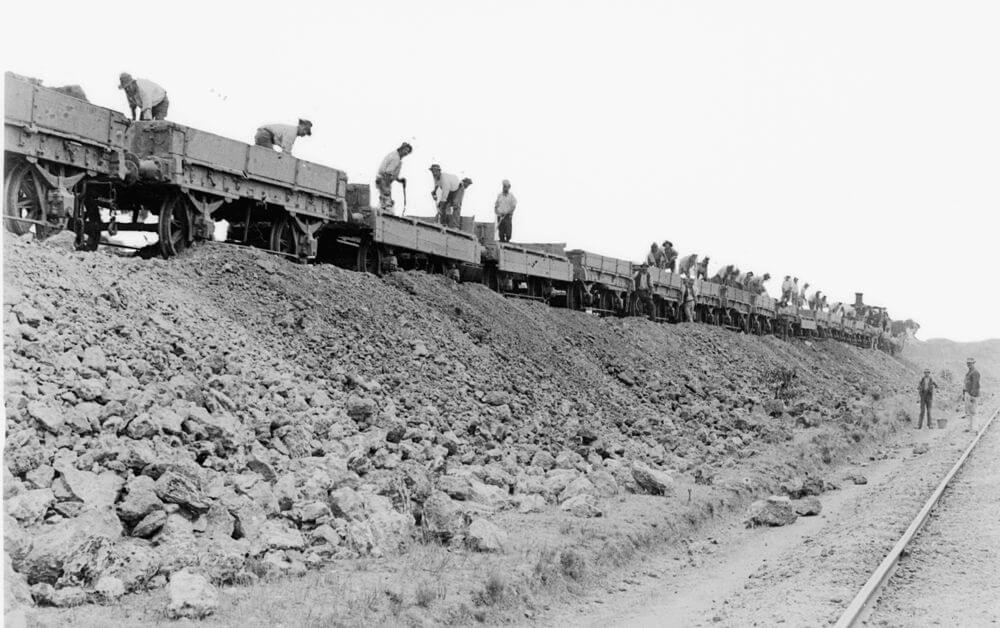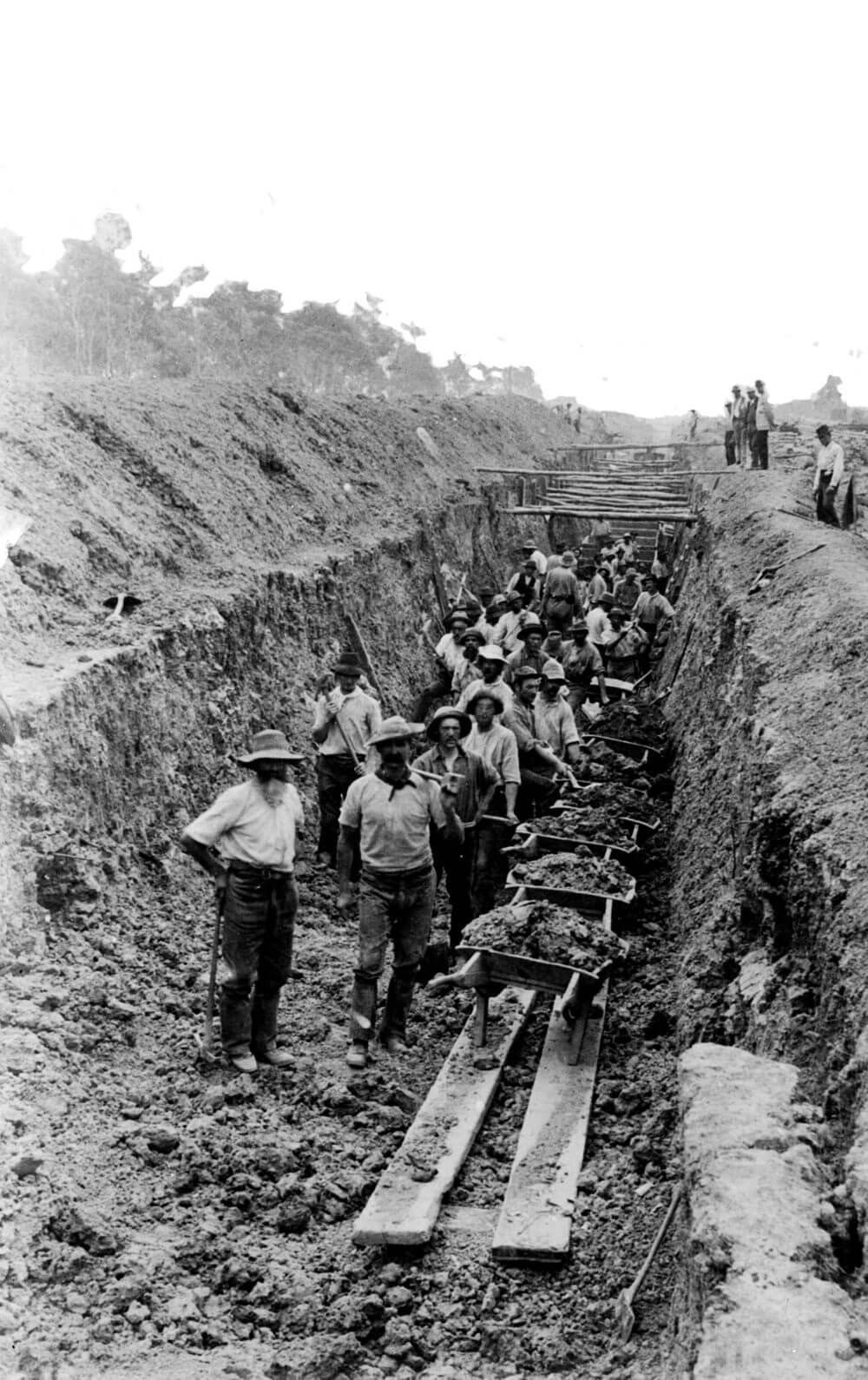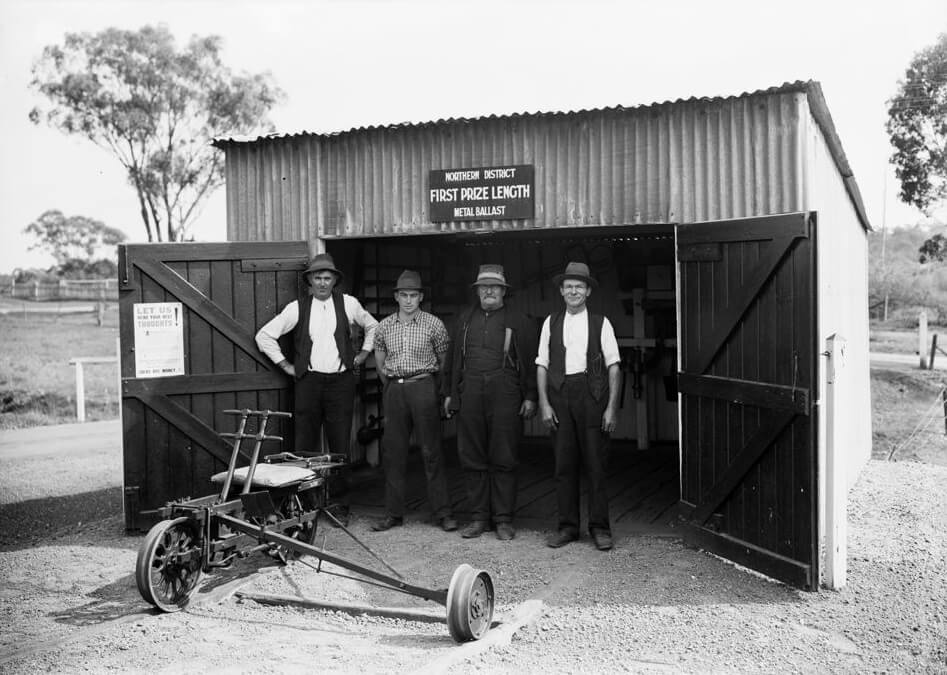Track gangs were once a familiar sight on the railways. Part of the Way and Works Branch, the gangs travelled the track's length daily checking for obstructions and buckled rails. They travelled on gangers 'cars' or 'trolleys' — small manually-powered or fuel-driven vehicles that ran on the track.
Gangs usually consisted of a ‘ganger’ (the head of a gang of labourers) and three labourers, living in the closest local town to the track they were maintaining. Special gangs of up to 30 carried out non-standard track maintenance, such as major repairs, installing new sidings, crossovers and points. These men lived in makeshift camps beside the railway line.
Gangers on trolleys, Derrinallum, Victoria, c.1913
Reproduced courtesy Museums Victoria
Way and works crew replacing rails, Fernihurst district, c. 1915
Reproduced courtesy Museum Victoria
Staff on gang cars, Yarrawonga to Oaklands line, c. 1930
Reproduced courtesy Museum Victoria
The work was physically demanding, with few mechanical aids available, and conditions were poor. The men worked in all weather, in the blistering heat and freezing cold. They spent all day on the line and the risk of accident was constant. Michael Quirk, a ganger, was ‘cut to pieces’ on the railway near Eltham in 1903. Francis Old, aged only 38, was killed at Landsborough in 1930. Two others narrowly escaped:
A motor trolley conveying W. Loveridge and F.E. Curr, with Old trailing another trolley at the back were proceeding to Landsborough. At a spot three-quarters of a mile on the down side a curve occurs in the line, and the train just rounded this when Loveridge and Curr looked up and saw the black outline of the engine directly in front of them. They jumped clear when the engine was a few yards from the trolley, and called out to Old, who either had not time to jump or did not hear the call. The engine dashed on to the trolley, and Old received the full force of the impact. He was frightfully knocked about, and death was instantaneous.
The fatality has created much gloom in the Landsborough district, where Old was held in great esteem. Loveridge and Curr bore marks where the engine grazed them. The three gangers had completed a job on the down side of Landsborough, and were returning to the station at the time of the accident.
Track gangs at work regrading, Bunyip Bank near Deep Lead, c.1930
Reproduced courtesy Public Record Office Victoria
Track gangs at work regrading, Bunyip Bank near Deep Lead, c.1930
Reproduced courtesy Public Record Office Victoria
Track gang at their shed, Northern District, c.1940
Reproduced courtesy Public Record Office Victoria
By the 1960s a range of machines had been developed for tasks such as ‘ballast cleaning and re-tamping, sleeper replacement, dog-spike pulling and driving and the complex task of track alignment’. Workload was reduced, as was the workforce.

